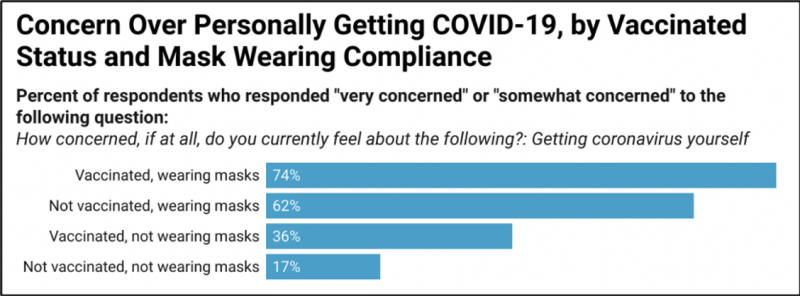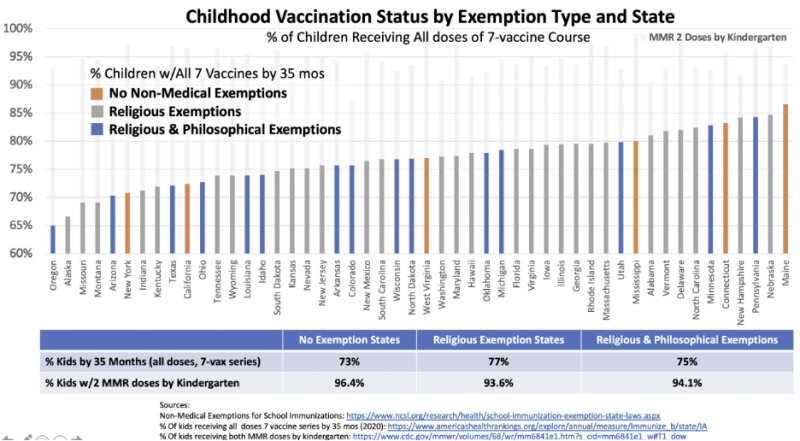Not all popular policies are good policies. Prohibition (1920-1933), one of the most visible public policy failures in modern history, was wildly popular. There are lessons here.
Like vaccines mandates, Prohibition was rooted in the desire to achieve a positive social end, one its proponents felt couldn’t be achieved without legal coercion. It was widely supported by “the science.” The goal of Prohibition was not to reduce drinking, per se. Its goal was to reduce problems deemed to be caused by drinking—crime, poverty, domestic violence, etc. It was here where Prohibition failed so spectacularly; it exacerbated many of the ills it had hoped, not just to mitigate, but to cure.
Where Prohibitionists differed from our current crop of “Mandaters,” was in their consideration of unintended consequences. Prohibitionists knew that Prohibition would have a huge impact on federal revenues, a large portion of which came from excise taxes on alcohol. To address this concern, they first campaigned to pass the 16th amendment, which allowed for a federal income tax. History tells us there were many more unintended consequences they missed, but they did make some effort.
The unintended consequences of vaccine mandates, which seek to exclude tens of millions of people from society, don’t appear to have been considered at all. What are the costs of forcing people out of their jobs—especially at a time when we have a labor shortage? What are the costs of firing doctors and nurses as we go into another COVID season, of firing police officers when the murder rate is increasing at the fastest rate in our history? What are the costs of excluding large swaths of the population from restaurants and other entertainment venues? Are those costs exacerbated when they are borne disproportionately by minorities, who are vaccinated at lower levels than their white counterparts in every state in the U.S.—especially here in Massachusetts? The state of our current “debate” means that these questions, and many more are simply not being asked.

More troubling is that if enacted these mandates are unlikely to have any impact at all on the goal they seek to achieve—stopping coronavirus transmission. The CDC exploited regional differences in seasonality to demonize “the unvaccinated,” and claim that high vaccination rates would eliminate the disease. It was true in the summer—the south’s main “COVID season”—less vaccinated states like Alabama, Georgia and Florida had higher case rates than highly vaccinated states like Massachusetts.
But now that our “season” is approaching, that has flipped. We now have a significantly higher case rate than all three of those states. More rigorous analysis finds that higher vaccination rates do not reduce cases—they may slightly increase them—according to a recent study of 68 countries and ~3000 counties. We see this in real-world data, too. Here in Massachusetts, our cases are currently more than 2-fold higher than the same time last year. In England, infection rates are higher in vaccinated than unvaccinated groups in all age groups over 30. Testing protocols that exempt vaccinated people from testing, mean that both of these numbers are likely understated.
We can argue the degree to which vaccination rates reduce infection—the available data in the U.S. is atrocious. But it can no longer be claimed that they will eliminate the disease. In Iceland for example, which has more than 80% of its population vaccinated, cases are surging.
In colleges around the country, with close to 100% vaccination rates, cases are higher this year than last—at Cornell, cases are 5x higher than last year at the same time. This is despite continued indoor masking, weekly testing, and restrictions on socializing and travel.
Additionally, we do have experience with other non-sterilizing vaccines (vaccines that don’t stop infection), and in no case has a disease been eradicated with such a vaccine. The chickenpox vaccine is a non-sterilizing vaccine. Our vaccination rate for chicken pox is more than 90%. Despite this, chicken pox still circulates widely. For this reason, many countries, including the U.K. do not vaccinate widely for chicken pox, focusing vaccines instead only on high-risk populations.
A mandate this draconian can surely only be considered where there is unequivocal public benefit. That bar has not been met here—not even close. In an evolution typical of our new upside-down world, vaccinated people who are protected from COVID-19 by virtue of their vaccines, are now being told they need to be protected from unvaccinated people. That there is copious data available to refute this statement is unimportant. The goal is not to provide useful public health advice. The goal is to stoke fear and resentment until it reaches a pitch of righteous indignation.
This, too, was tried during Prohibition. It helped to fuel the rise of the KKK. Given the lower vaccination rates in Black and Hispanic communities, one would think this might raise a red flag or two.
Occasionally we hear that even if vaccination doesn’t reduce cases, we still need to force people to be vaccinated to avoid hospitals being overwhelmed. This is another red herring. Our hospitals were not even close to being overwhelmed during last year’s winter wave without a vaccine. During our winter peak, COVID patients occupied fewer than 13% of all beds—and staffed beds were reduced by 11%–not exactly an action you would take if you were feeling overwhelmed. Our ICU’s were so “overwhelmed,” they felt the need to reduce staffed beds by 30%.
We will likely have a significant winter COVID surge—that should be the lesson of the summer—that even with high levels of vaccinations among vulnerable populations, cases, hospitalizations and deaths can still surge. We are already seeing this in Europe. We should be preparing for this, not pretending it won’t happen due to our state’s high vaccination levels.
In Massachusetts, we currently have 50% more COVID patients hospitalized than the same time last year, and deaths are roughly equal. In hospitals, in order to reduce nosocomial (in-hospital) infections, we should be trying to identify those people who contracted COVID-19 and have natural immunity, as these people are significantly less likely to become infected (6-13 times less likely)—and hence less likely to transmit COVID-19 to vulnerable patients—than a vaccinated person who was never infected.
Instead, we are firing these people if they have chosen not to get vaccinated, as well (despite scores of studies showing that vaccination of previously infected people provides no additional protection, and puts recipients at higher risk for adverse events).
To the extent that there are at-risk people who are not vaccinated, we should attempt to convince those people to get vaccinated. But mandates and coercion are not the way. The sad truth is that our public health officials have so damaged their credibility with their constant stream of “noble lies,” that doing this will be very, very hard. Here’s what could work, and for whom.
Before we go about trying to convince unvaccinated people to get vaccinated, we need first to understand their reasons for not getting vaccinated. As best I can tell, these are the main reasons people choose not to get vaccinated, and the likelihood of persuading them.

Naturally-acquired immunity appears to be both more durable and more effective, especially at reducing infection. Thus, it hardly seems necessary to focus our efforts on persuading these people to get vaccinated. Earlier I noted that Black and Hispanic people are less likely to have been vaccinated. It is also worth noting that they have been infected at far higher rates, and thus have far higher rates of natural immunity—30-50% higher than whites, and more than twice the rate of Asians.
Nor should we be focusing our efforts on the young and healthy. The FDA estimated the risk of covid-associated death for a healthy 30-year-old to be 0.0004%–1 in 250,000—substantially less than their risk from flu, car accident, suicide, drug overdose and a whole host of other things.
Given this, we should more narrowly tailor our efforts to reach those groups who are at-risk but remain unvaccinated. Below are five actions that would help:
1. Remove the threat of mandates. There is a small group of people who are at-risk and whose principal reason for not getting vaccinated is because they do not want to capitulate to the coercion now being applied—they are refusing on principal. Some of these people would (I believe) benefit from being vaccinated. By removing the threat mandates, we would remove this objection for these people.
2. CDC acknowledging—and apologizing for—repeated lies, overstatements, failures, politicization, and general incompetence. More than any one thing, this would help to restore trust. There is a group of people who will not do ANYTHING the CDC recommends until the CDC acknowledges its many errors.
3. Providing co-morbidity-based relative risk. Whether from laziness or incompetence, the CDC has not provided age- and co-morbidity-based risk stratification for COVID. They routinely lump in the healthy with the co-morbid. This wildly over-states the risk for healthy people, but it ALSO wildly understates the risk for people with comorbidities—especially those with multiple comorbidities. Even if one were to take into account every single VAERS death, the risk for these people from COVID versus the vaccine would be far greater. If the CDC were to provide a way for people to really understand their individual risk from COVID—and to see how much it differed from a healthier person—it is my firm conviction that many of those people who were at-risk would make the decision to get vaccinated (so long as the threat of mandates were removed).
4. Drop the “my vaccine protects you” rhetoric. This rhetoric is far more likely to provide another reason for vax-hesitant at-risk people NOT to get vaccinated—particularly in highly-vaccinated states. Additionally, as more and more data roll in, it appears to be completely untrue (see above). If we have learned anything over the past year, it is that personal fear is a powerful motivator.
5. Be honest about masks. There is a group of people—predominantly Black women—who have chosen not to get vaccinated because they believe masks provide equivalent or better protection than vaccines—that’s what the CDC has told them for the last 19 months—and they believe it, because they haven’t gotten COVID. These “pro-mask,” “no-vax” people appear to out-number “no-mask,” “no-vax” people. This “pro-mask, no-vax” group is also extremely concerned about getting COVID. Once again, in our upside-down world, the only people more concerned about getting COVID are those people who are vaccinated and masked. All it would take to convince these “pro-mask, no-vax” people is the CDC acknowledging how low-quality and weak is the evidence supporting a protective effect of masks other than N-95’s. The CDC has told people that the reason they have not gotten COVID thus far is because they and everyone around them wore masks. So long as they continue telling people this, many in this group—which is less trusting of the medical establishment and vaccines—will continue to rely on the “protection” that has “kept them safe” for the last 18 months, rather than the unknown of the vaccine. This is yet another example of how the CDC’s incompetence is literally killing people (note, these three teachers worked in school districts that have mask mandates in place for children—which likely added to their false sense of security).


Persuasion is a far more effective tool than coercion. Even when it comes to normal childhood vaccinations, there is very little difference in vaccination rates in states without exemptions, and states that have soft mandates that allow for religious and philosophical exemptions.
In fact, no-exemption states have lower vaccination rates at 35 months than those states that allow for religious, medical and philosophical exemptions. By kindergarten, all states have reached very high levels of vaccination. And while no-exemption states are slightly higher, those numbers exclude unvaccinated children forced out of the school system by the rigidity of these policies.

Prior to COVID, we understood that one of the goals of our society was to create an inclusive society. These new measures are an about-face from that stance. They seek to exclude and marginalize tens of millions of people—and the ends do not justify the means.
We do not know what the costs of this shift will be—our politicians and pundits have studiously avoided asking those questions—but if these policies are enacted, the costs will be monumental.
Prohibition re-shaped many aspects of American life. The changes we are now contemplating are far greater. The mandates we are currently considering seek to strip the right to make a living from tens of millions of people. The targets of these actions are not likely to view them as trivial, even if their proponents do.
To garner support for these radical infringements of our most fundamental rights, politicians and bureaucrats have engaged in shameless “othering,” telling us that certain groups of “bad” people put other groups of “good” people in mortal danger. These tactics have been used many times before in our country and others. “Ugly” doesn’t even begin to describe the results.
It’s time for us to stand with our families, friends and neighbors, not with the politicians and bureaucrats who are trying to blame them for their own failures. We need to return to a society that is based on trust, transparency and accountability, rather than this new model of coercion, censorship, and scapegoating.
Reposted from the author’s site.
Published under a Creative Commons Attribution 4.0 International License
For reprints, please set the canonical link back to the original Brownstone Institute Article and Author.










